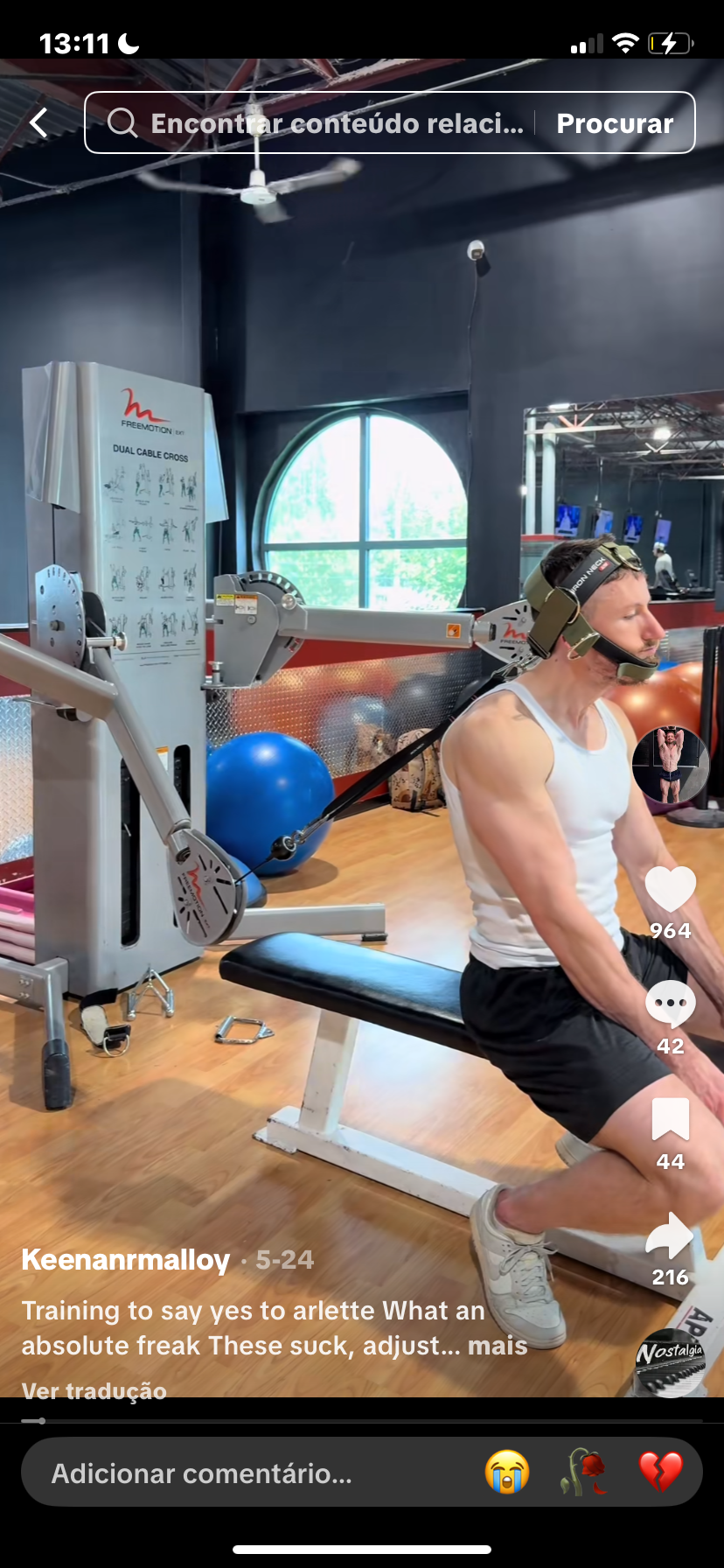This is going to be my first guide on this site since i entered on it, and also, im brazilian so it might have some english errors, i apologize for that.
On this guide im going to talk about, what causes muscle growth, and why isometrics would cause it too, the diference between isotonics movements and isometric movements, and how to perform them to max neck gains.
1 What causes muscle growth
Till this day there are still some people that BELIEVES micro-tears causes muscle growth, but we indeed have some pretty good data and reasoning to believe that is quite well the opposite.
In this study right here : https://pubmed.ncbi.nlm.nih.gov/10601183/
They put young participants under design designed to cause muscle damage, on curls focusing on the eccentric, and they only did one session. As expected, there was enough damage, the so called “micro tears”, and once the swelling got down they revealed that: their arms got smaller, so not only they didnt get an enhaced response for micro-tears, but it also was counterproductive for hypertrophy. So if micro tears dont cause muscle growth, what does? Theres only one answer.
**Mechanical Tension.**
1.2 What is mechanical tension, and how to reach
Mechanical tension is the force exerted on muscle fibers when they contract under resistance, and it is the primary driver of muscle growth and strength.
Slower contractions increase mechanical tension because a slower shortening velocity allows more actin-myosin crossbridges to form and stay attached at one time, which generates greater force and tension on the muscle fibers. This prolonged and high force production is a key stimulus for muscle growth (hypertrophy).
And Isometrics have the slowest contraction velocity of all, which means, more MuR (Motor unit recruitment) and more hypertrophy, which means, more gains.
2 Difference between isotonics and isometrics movements
The main difference is that isotonic exercises involve muscle movement against a constant weight, changing the muscle's length, while isometric exercises involve muscle contraction without changing length or moving a joint. Isotonic movements include bicep curls or squats, whereas isometric exercises are static holds like a plank or a wall sit.
You could still do isotonics movements to gains for the neck, but if you dont want to look like this in the gym:

Yeah, we better stick to them isometrics at home.
3 How to perform them:
To do these isometrics, we need two factors, do our neck muscles their function and bring them mechanical tension. Which are flexion, lateral flexion (side-bending), extension (bending backwards), and rotation (turning side to side) An very Nice way to do them, is by simple following this example on this video.
And i guess this is the end, enjoy neck gains
On this guide im going to talk about, what causes muscle growth, and why isometrics would cause it too, the diference between isotonics movements and isometric movements, and how to perform them to max neck gains.
1 What causes muscle growth
Till this day there are still some people that BELIEVES micro-tears causes muscle growth, but we indeed have some pretty good data and reasoning to believe that is quite well the opposite.
In this study right here : https://pubmed.ncbi.nlm.nih.gov/10601183/
They put young participants under design designed to cause muscle damage, on curls focusing on the eccentric, and they only did one session. As expected, there was enough damage, the so called “micro tears”, and once the swelling got down they revealed that: their arms got smaller, so not only they didnt get an enhaced response for micro-tears, but it also was counterproductive for hypertrophy. So if micro tears dont cause muscle growth, what does? Theres only one answer.
**Mechanical Tension.**
1.2 What is mechanical tension, and how to reach
Mechanical tension is the force exerted on muscle fibers when they contract under resistance, and it is the primary driver of muscle growth and strength.
Slower contractions increase mechanical tension because a slower shortening velocity allows more actin-myosin crossbridges to form and stay attached at one time, which generates greater force and tension on the muscle fibers. This prolonged and high force production is a key stimulus for muscle growth (hypertrophy).
And Isometrics have the slowest contraction velocity of all, which means, more MuR (Motor unit recruitment) and more hypertrophy, which means, more gains.
2 Difference between isotonics and isometrics movements
The main difference is that isotonic exercises involve muscle movement against a constant weight, changing the muscle's length, while isometric exercises involve muscle contraction without changing length or moving a joint. Isotonic movements include bicep curls or squats, whereas isometric exercises are static holds like a plank or a wall sit.
You could still do isotonics movements to gains for the neck, but if you dont want to look like this in the gym:

Yeah, we better stick to them isometrics at home.
3 How to perform them:
To do these isometrics, we need two factors, do our neck muscles their function and bring them mechanical tension. Which are flexion, lateral flexion (side-bending), extension (bending backwards), and rotation (turning side to side) An very Nice way to do them, is by simple following this example on this video.
And i guess this is the end, enjoy neck gains

